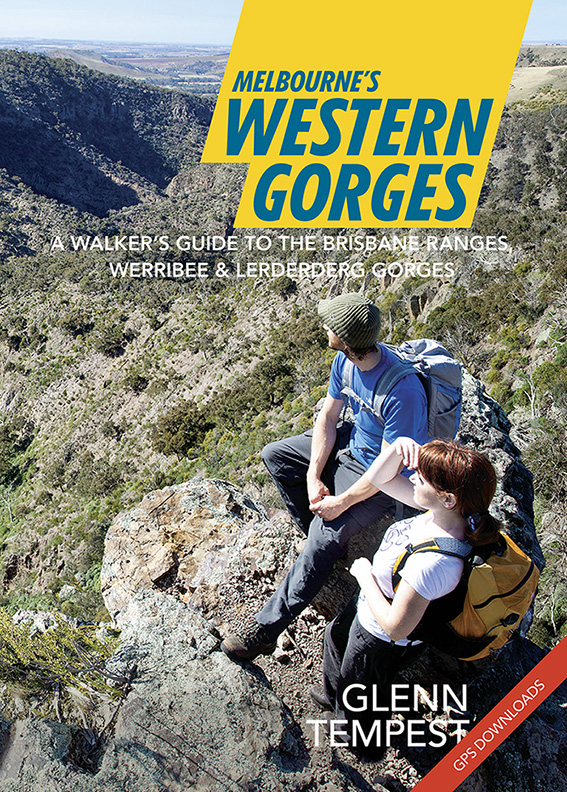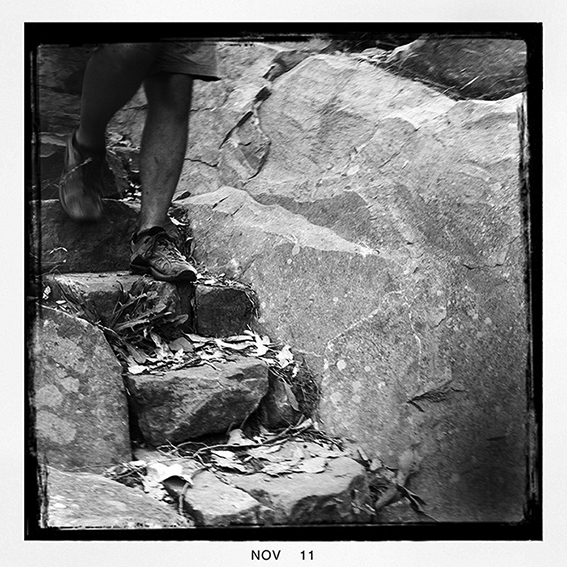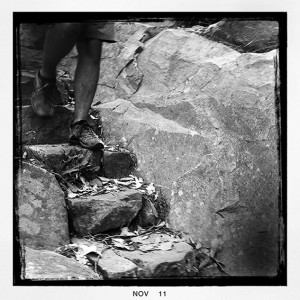

 There are four official public entrances into Werribee Gorge State Park. The main entrance is via Myers Road on the eastern side of the park and is accessed via the Western Freeway from just past Bacchus Marsh. The other three entrances are located along Ironbark Road via Western Bluff, Ironbark Gorge and Ingliston Gorge Carparks. Western Bluff Carpark provides access to Western Bluff Lookout and is occasionally used by walkers descending the spectacular Needles Spur (through private property) into the gorge. Ingliston Gorge Carpark provides access to the Ingliston Block, the isolated western arm of the park, while Ironbark Gorge Carpark provides access to the Falcons Lookout Walk, the Ingliston Granites and Ironbark Gorge. Ironbark Gorge Carpark is also the nearest trail-head for Falcons Spur, an increasingly popular walk that descends into the gorge (again through private property). Falcons Lookout itself is one of the most popular rockclimbing destinations close to Melbourne.
There are four official public entrances into Werribee Gorge State Park. The main entrance is via Myers Road on the eastern side of the park and is accessed via the Western Freeway from just past Bacchus Marsh. The other three entrances are located along Ironbark Road via Western Bluff, Ironbark Gorge and Ingliston Gorge Carparks. Western Bluff Carpark provides access to Western Bluff Lookout and is occasionally used by walkers descending the spectacular Needles Spur (through private property) into the gorge. Ingliston Gorge Carpark provides access to the Ingliston Block, the isolated western arm of the park, while Ironbark Gorge Carpark provides access to the Falcons Lookout Walk, the Ingliston Granites and Ironbark Gorge. Ironbark Gorge Carpark is also the nearest trail-head for Falcons Spur, an increasingly popular walk that descends into the gorge (again through private property). Falcons Lookout itself is one of the most popular rockclimbing destinations close to Melbourne.

 Over the past year I’ve noticed that Ironbark Gorge Carpark has become increasingly busy. In fact it’s not uncommon to find 6 to 8 cars and perhaps a bus using the carpark on any midweek day. On the weekend I have seen up to 50 or more climbers at the cliff and perhaps a dozen or more walkers on the trails. This equates to at least a dozen or more vehicles crammed into the tiny carpark. I don’t know the actual park user numbers but I suspect that on many days there would be more visitors accessing the park through the ‘back-door’ of Ironbark Gorge Carpark then would be along the ‘official’ Myers Road entrance.
Over the past year I’ve noticed that Ironbark Gorge Carpark has become increasingly busy. In fact it’s not uncommon to find 6 to 8 cars and perhaps a bus using the carpark on any midweek day. On the weekend I have seen up to 50 or more climbers at the cliff and perhaps a dozen or more walkers on the trails. This equates to at least a dozen or more vehicles crammed into the tiny carpark. I don’t know the actual park user numbers but I suspect that on many days there would be more visitors accessing the park through the ‘back-door’ of Ironbark Gorge Carpark then would be along the ‘official’ Myers Road entrance.
Interestingly, Myers Road is serviced by two large carparks (the Quarry Picnic Area and Meikles Point Picnic Area) and each have have picnic facilities, BBQs and toilets. In comparison, Ironbark Gorge Carpark is very small and rough to say the least. The geography of the area means that this carpark can’t be made much larger, but it could benefit from a redesign if it is to cater for the growing numbers of cars using it. The carpark also has no toilets. While this would be a minor issue for some, it is a major issue for many. Both walkers and climbers are forced to go bush and this is simply unacceptable at such a heavily used carpark as this. Perhaps having a toilet in the carpark would help to reduce the enormous number of poos and loo paper scattered around the vicinity of Falcons Lookout. In fact, the situation is becoming so bad at Falcons Lookout that perhaps the best thing to do would be to build a drop toilet on the adjoining saddle.
Which brings me to my final gripe. The initial section of trail (down past the old railway workers hut sites) into Ironbark Gorge is a complete disaster. The contractors that Parks Victoria used to ‘fix’ this section of the trail have done an awful job. If anything, the pine boards anchored across the trail has worsened the erosion and created a major eyesore. Simply put, this section of the trail is loose, ugly and dangerous. With the large numbers of people using the Falcons Lookout Walk you would have expected Parks Victoria to have properly fixed this trail a long time ago. Possibly the only way to save this trail now would be for Parks Victoria to contract a reputable construction company such as TTMS (Track and Trail Management Services) to rebuild it. Failing that (and knowing how little money Parks Victoria these days invest in high-quality long-term trail maintenance) it may be simpler, cheaper and quicker to realign this section of the trail down the spur 20m or so to the west, then cut it back to the point at where the original trail reaches the bottom of the initial gully. This would greatly reduce erosion problems and is where the trail should have gone in the first place.




























